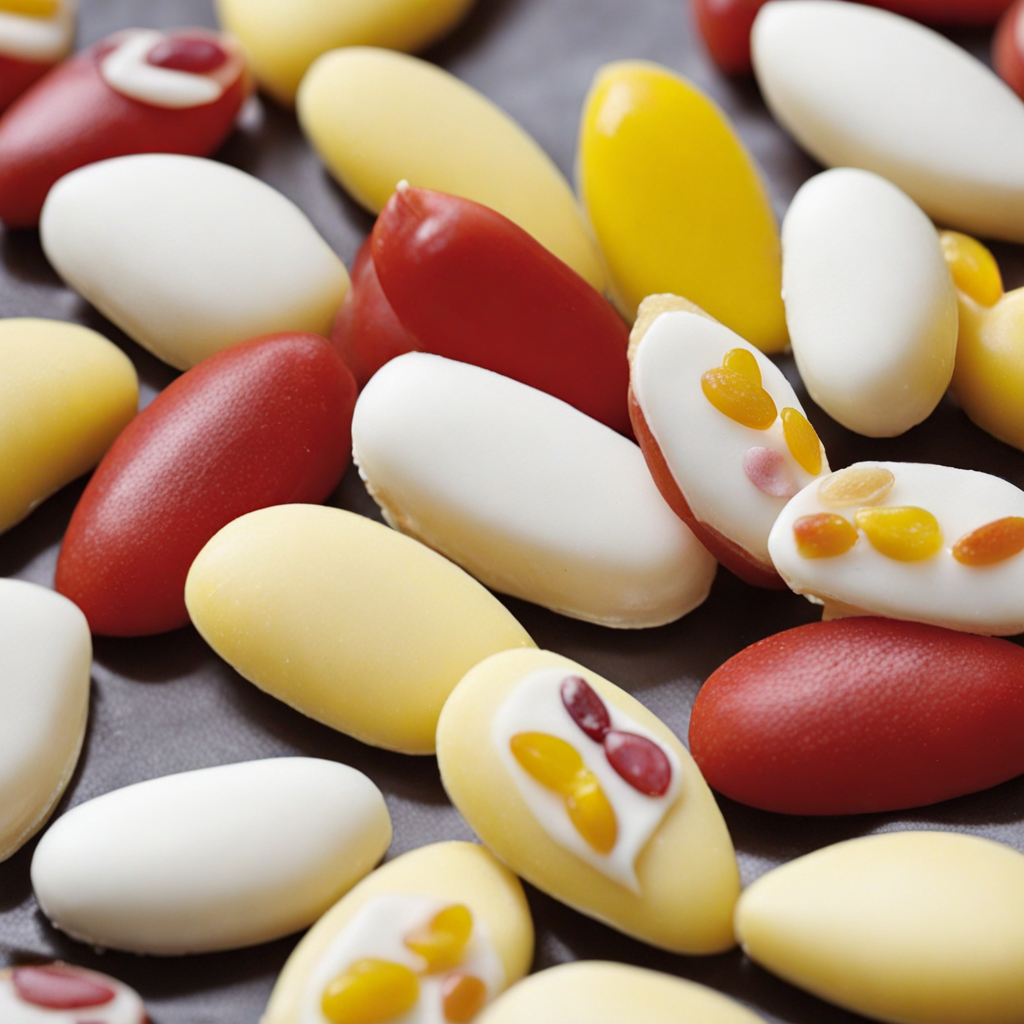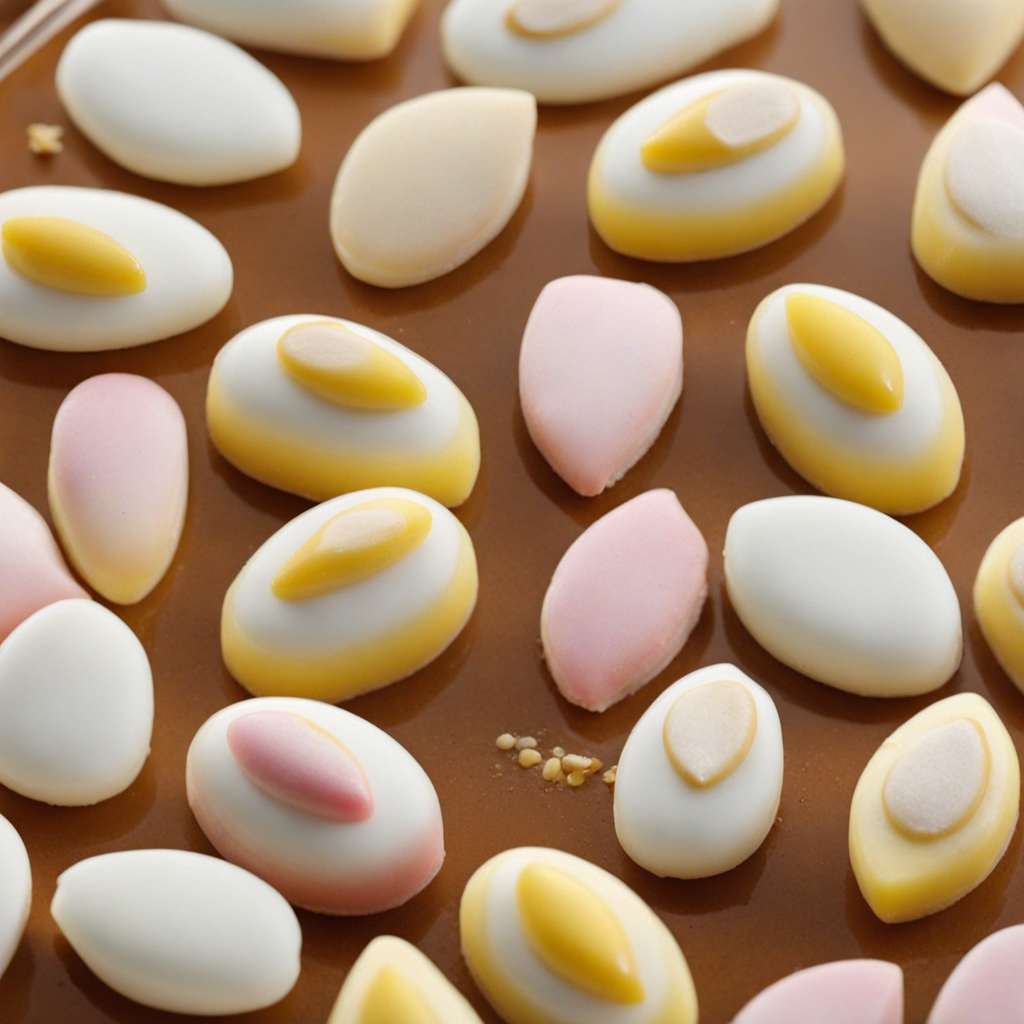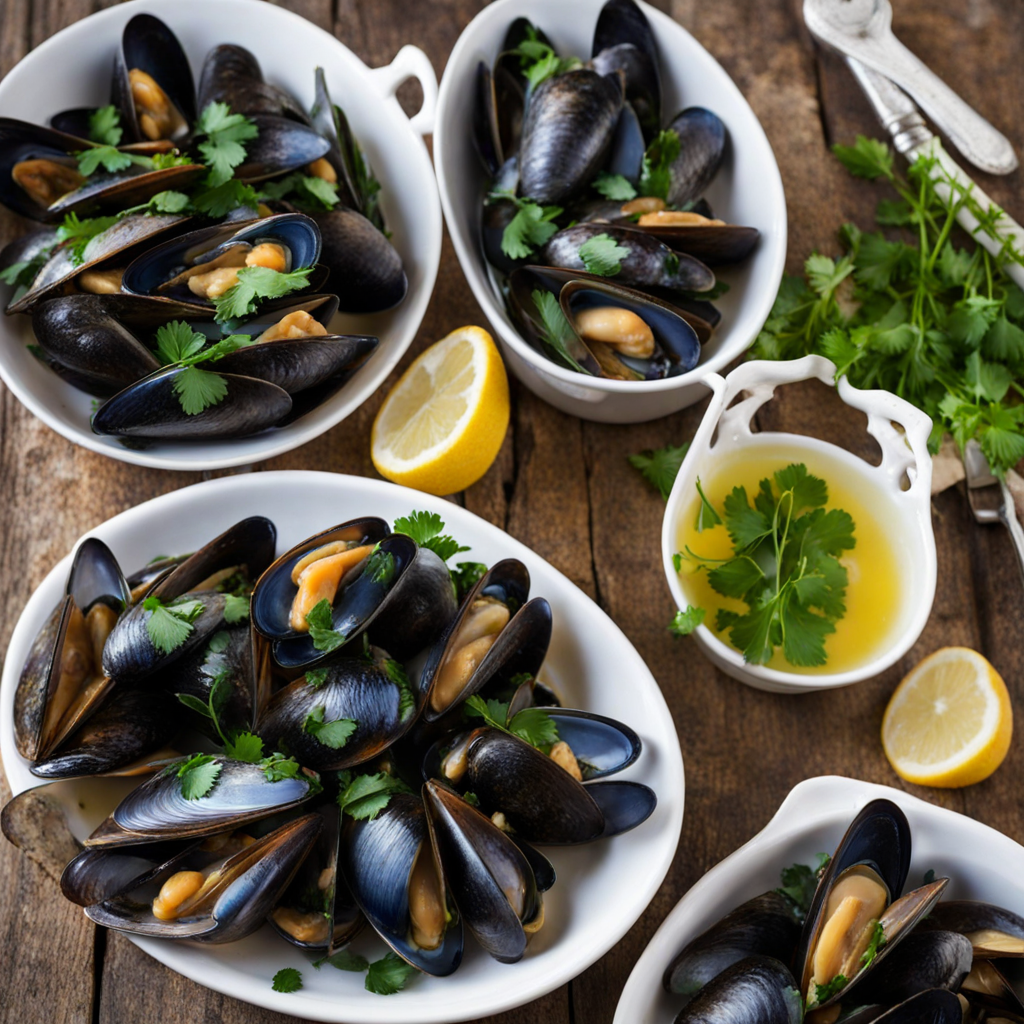Calissons
Calissons are a delightful confection originating from the sunny region of Monaco, characterized by their unique blend of flavors and textures. These small, oval-shaped treats boast a smooth, almond paste base that is subtly flavored with orange blossom or candied melon. The use of finely ground almonds gives them a wonderfully nutty aroma, while the addition of a hint of citrus adds a refreshing brightness that balances the sweetness perfectly. Each Calisson is elegantly topped with a thin layer of royal icing, providing a glossy finish that enhances both their appearance and taste. As you take your first bite, the delicate texture of the almond paste melts in your mouth, releasing a symphony of flavors that is both rich and light. The contrast between the chewy almond base and the crisp icing creates a delightful mouthfeel that keeps you reaching for more. These treats are traditionally enjoyed during festive occasions, making them a symbol of celebration and indulgence. Their charming appearance and exquisite taste make Calissons a perfect gift or a sweet addition to any dessert table. Beyond their taste, Calissons also offer a glimpse into the culinary heritage of Monaco, where the art of confectionery is taken seriously. The meticulous process of crafting these treats requires skill and patience, ensuring that each piece is a little work of art. Whether enjoyed alongside a cup of coffee, tea, or as a standalone treat, Calissons invite you to savor a taste of Monaco's rich culture and tradition, making them an irresistible choice for anyone eager to explore new flavors.
How It Became This Dish
The Sweet History of Calissons: A Culinary Gem from Monaco Calissons, those delightful almond-shaped confections, are not only a treat for the taste buds but also a symbol of cultural heritage, particularly in the Provence region of France and Monaco. These sweet delicacies encapsulate a rich history that intertwines culinary art, regional identity, and even royal connections. #### Origins of Calissons The origins of calissons can be traced back to the 15th century in the Provençal town of Aix-en-Provence, though some accounts suggest their roots may reach even further back. The name "calisson" is believed to derive from the Provençal word "calissoun," which refers to a type of sweet. The first documented recipe appears around 1630, but it is widely accepted that the confection was enjoyed well before this date, particularly during festive occasions. The traditional calisson is crafted from a blend of finely ground almonds, candied melon or orange peel, and sugar, all of which are combined to create a marzipan-like paste. This mixture is then shaped into an oval and often topped with a thin layer of royal icing, giving it a glossy finish. The use of local ingredients, particularly almonds, reflects the agricultural wealth of the Provence region, which has been cultivating almonds since antiquity. #### Cultural Significance Calissons are more than just sweets; they are a representation of the cultural identity of Provence and Monaco. The confection is often associated with celebration and festivity. In Aix-en-Provence, calissons are traditionally given as gifts during weddings, baptisms, and other significant life events. Moreover, they are particularly popular during the Christmas season, adding sweetness to holiday gatherings. In Monaco, calissons have taken on a unique significance as part of the local culinary scene. The principality, with its blend of French and Italian influences, has embraced calissons as a symbol of its gastronomic identity. The Monegasque royal family has also played a role in popularizing the treat, particularly during public events and celebrations. The connection between calissons and the monarchy adds a layer of prestige to this humble sweet. #### Development Over Time Throughout the centuries, calissons have evolved while maintaining their traditional roots. The 19th century saw a surge in popularity for this confection, coinciding with the rise of tourism in Provence. Visitors flocked to Aix-en-Provence, drawn by its charming streets, vibrant markets, and, of course, its delectable calissons. Local confectioners began producing calissons commercially, leading to the establishment of renowned calisson shops that still exist today. The production process of calissons has also seen advancements over time. While traditional methods are still honored, modern techniques and innovations have enhanced the consistency and flavor of the sweets. The almond paste, for instance, is now often produced using sophisticated grinding methods that yield a smoother texture, while the candied fruits are sourced from various regions to diversify flavors. In the 20th century, the calisson underwent a resurgence in gourmet circles, as chefs began experimenting with new flavors and presentations. Artisan confectioners embraced the concept of "fusion" calissons, incorporating ingredients such as chocolate, spices, and even exotic fruits to create unique variations. This experimentation not only catered to evolving consumer tastes but also helped keep the tradition alive in a contemporary context. #### Calissons Today Today, calissons are celebrated far beyond the borders of Provence and Monaco. They have become a beloved treat throughout France and are increasingly recognized in international markets. The confection is often packaged as a luxurious gift, showcasing its status as a gourmet delicacy. In Monaco, calissons are frequently featured in culinary festivals and events, underscoring their importance to the local culture. Moreover, calissons have found their way into the hearts of pastry chefs around the world, inspiring creative reinterpretations. Innovative recipes can be found in upscale patisseries, where chefs experiment with flavors like lavender, pistachio, and even rosewater, breathing new life into the classic treat. These adaptations reflect a growing appreciation for traditional sweets and their potential for reinvention. #### Conclusion Calissons are more than just a sweet delight; they are a testament to the rich culinary history of Monaco and Provence. From their humble beginnings in the 15th century to their status as a symbol of celebration and cultural pride, calissons embody the art of confectionery with a story that spans centuries. As we savor each delicate bite, we not only indulge in a moment of sweetness but also connect with a tradition that continues to evolve while honoring its roots. In a world that often rushes forward, calissons remind us of the beauty of heritage, the joy of craftsmanship, and the power of food to unite people across generations. Whether enjoyed during a festive occasion or as a simple treat, calissons invite us to take a moment to appreciate the history and culture they represent—a true delicacy worth savoring.
You may like
Discover local flavors from Monaco







